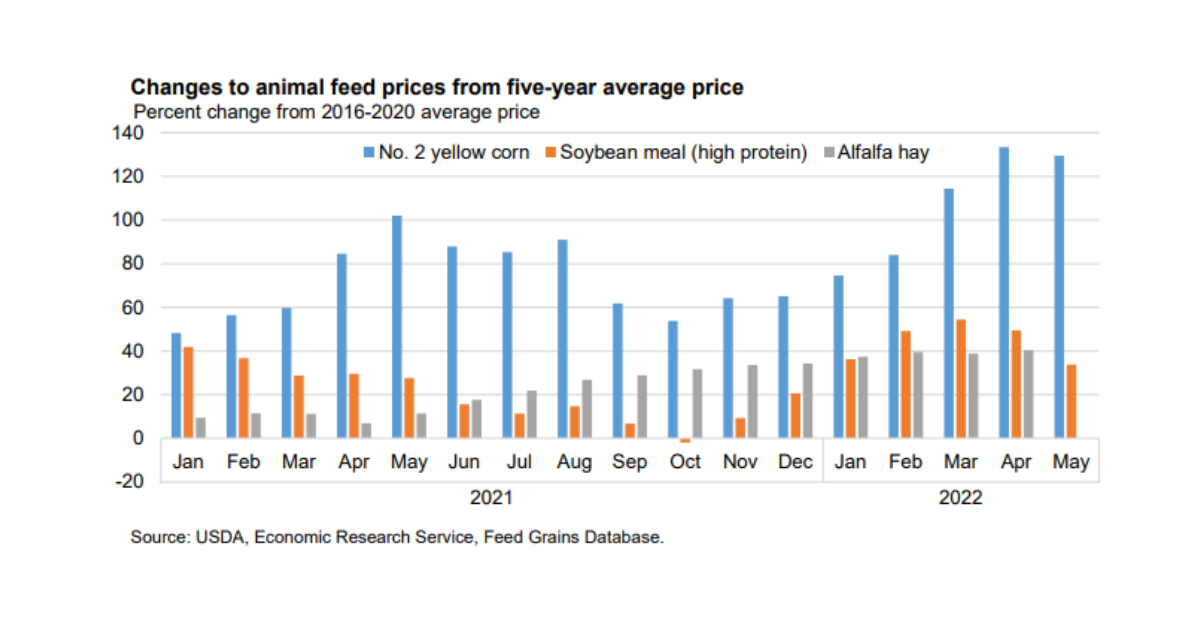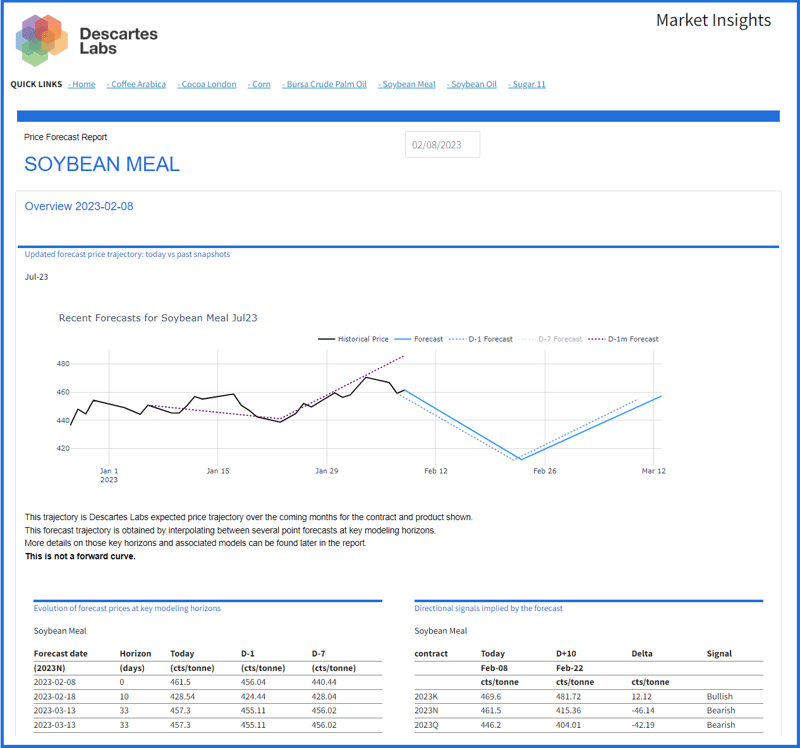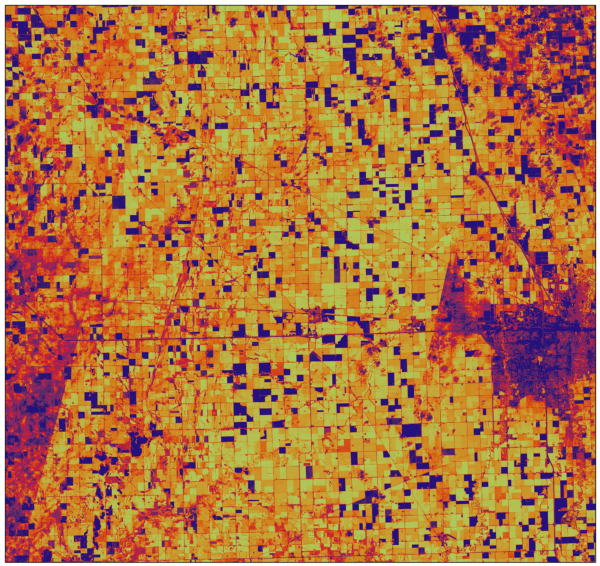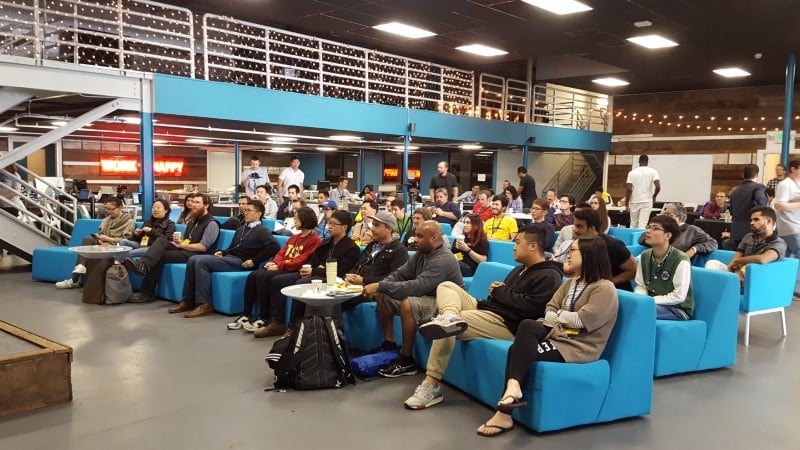Article category: Consumer Goods
Advancing the science of corn forecasting
Corn yields by county, updated weekly on www.descarteslabs.comToday, Descartes Labs is releasing...
Article category: Consumer Goods

As can be seen on the chart above published by the USDA earlier in 2022, cost of soybean-meal feed was 20-50% higher than the 2016-2020 average price in 2021 & 2022, while cost of corn feeds reached a peak of 120% higher than the long-term average 2016-2020. To make things ever more difficult, those higher prices were not stable and volatility was the name of the game. Even after mitigating intraday and day-to-day volatility by taking monthly averages, we observed significant variations from one month to the next, with opportunities to secure feeds at prices sometimes 10% to 50% below those observed a few months before or after.
Several fundamental and macro factors played, and continue to play, a role in that volatility: sub-trend yield in the US and then in Argentina because of drought, changing exports patterns affected by logistics issues (river levels), fluctuating foreign exchange rates affecting exports competitiveness and the invasion of Ukraine by Russia putting on hold Ukrainian exports for months. Most recently in December 2022, corn and the soybean complex were affected by the disappointing RVO mandates for 2023 published by the EPA, putting into question future demand for corn to produce ethanol or of soybean oil to blend into biodiesel… Even more than before, those dynamic market conditions emphasized the interplay between the various commodities markets, some key macroeconomic variables, the fundamental situation of the crops on the ground and the impact of the logistics and transportation means moving those very commodities.
In addition, factors that had become less relevant for price for a time, like US interest rates and their impact on the US dollar index, came back to the forefront, leading market participants to scramble and dust out old models from past years.
As can be seen from the chart below, the environment evolved quickly from a USD weaker than normal early 2021 to a USD much stronger than normal environment in a matter of 6 months. To be relevant and capture such features, a model needs to have been calibrated on a deep enough history.

At Descartes Labs, we have put together a robust research framework to generate price forecast trajectories for commodities products. Combining feature engineering by our commodities experts, feature selection and machine learning modeling over observations going back seven years, we are providing medium-range, backtested, price forecasts for corn and soybean-meal.
These past months, using the insights and recommendations from our Grains & Feeds Market Insights package, our customers had access to our peek into the future and were able to improve the timing of their purchases, saving them a few % points that allowed them to stay competitive and preserve some of their margins.
Our Grains & Feeds offering is structured around 2 key components:
Both components are provided for corn and soybean-meal futures contracts in one single package.

Our models have flexible configurations and can easily be extended to test, validate and possibly incorporate customer-specific features derived from additional or proprietary data sources.
Similarly, the parameters of our hedging strategies are fully customizable to accommodate the specifics of your hedging program including timing, quantities, contract, frequency, liquidity constraints.
💡 If you are interested in learning more about how Descartes Labs can help you lower your procurement costs, reach out to our team to learn more about our off-the-shelf offering and our custom development engagements.

Article category: Consumer Goods
Corn yields by county, updated weekly on www.descarteslabs.comToday, Descartes Labs is releasing...

Article category: Consumer Goods
Descartes Labs’ weekly forecast for U.S. corn and soy yields. Last month, we were excited to unveil...

Article category: Consumer Goods
Case of soybeans: accurate weather forecasts, with machine learning, allow us to make crop...

Article category: Company News, Government
Does widespread hunger caused by food shortages contribute to conditions that lead to regional...